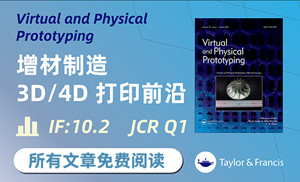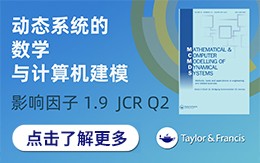当前位置:
X-MOL 学术
›
arXiv.eess.SP
›
论文详情
Our official English website, www.x-mol.net, welcomes your feedback! (Note: you will need to create a separate account there.)
Arrhythmia Classifier Based on Ultra-Lightweight Binary Neural Network
arXiv - EE - Signal Processing Pub Date : 2023-04-04 , DOI: arxiv-2304.01568 Ninghao Pu, Zhongxing Wu, Ao Wang, Hanshi Sun, Zijin Liu, Hao Liu
arXiv - EE - Signal Processing Pub Date : 2023-04-04 , DOI: arxiv-2304.01568 Ninghao Pu, Zhongxing Wu, Ao Wang, Hanshi Sun, Zijin Liu, Hao Liu
Reasonably and effectively monitoring arrhythmias through ECG signals has
significant implications for human health. With the development of deep
learning, numerous ECG classification algorithms based on deep learning have
emerged. However, most existing algorithms trade off high accuracy for complex
models, resulting in high storage usage and power consumption. This also
inevitably increases the difficulty of implementation on wearable Artificial
Intelligence-of-Things (AIoT) devices with limited resources. In this study, we
proposed a universally applicable ultra-lightweight binary neural network(BNN)
that is capable of 5-class and 17-class arrhythmia classification based on ECG
signals. Our BNN achieves 96.90% (full precision 97.09%) and 97.50% (full
precision 98.00%) accuracy for 5-class and 17-class classification,
respectively, with state-of-the-art storage usage (3.76 KB and 4.45 KB).
Compared to other binarization works, our approach excels in supporting two
multi-classification modes while achieving the smallest known storage space.
Moreover, our model achieves optimal accuracy in 17-class classification and
boasts an elegantly simple network architecture. The algorithm we use is
optimized specifically for hardware implementation. Our research showcases the
potential of lightweight deep learning models in the healthcare industry,
specifically in wearable medical devices, which hold great promise for
improving patient outcomes and quality of life. Code is available on:
https://github.com/xpww/ECG_BNN_Net
中文翻译:

基于超轻量级二元神经网络的心律失常分类器
通过心电信号合理有效地监测心律失常对人类健康具有重要意义。随着深度学习的发展,出现了众多基于深度学习的心电图分类算法。然而,大多数现有算法都以复杂模型的高精度为代价,导致高存储使用率和功耗。这也不可避免地增加了在资源有限的可穿戴人工智能(AIoT)设备上的实施难度。在这项研究中,我们提出了一种普遍适用的超轻量级二元神经网络(BNN),能够基于心电信号进行 5 级和 17 级心律失常分类。我们的 BNN 在 5 类和 17 类分类中分别达到了 96.90%(全精度 97.09%)和 97.50%(全精度 98.00%)的准确率,具有最先进的存储使用率(3.76 KB 和 4.45 KB)。与其他二值化工作相比,我们的方法擅长支持两种多分类模式,同时实现最小的已知存储空间。此外,我们的模型在 17 类分类中实现了最佳精度,并拥有优雅简单的网络架构。我们使用的算法专门针对硬件实现进行了优化。我们的研究展示了轻量级深度学习模型在医疗保健行业的潜力,特别是在可穿戴医疗设备方面的潜力,这些设备有望改善患者的治疗效果和生活质量。代码位于:https://github.com/xpww/ECG_BNN_Net 我们的方法擅长支持两种多分类模式,同时实现最小的已知存储空间。此外,我们的模型在 17 类分类中实现了最佳精度,并拥有优雅简单的网络架构。我们使用的算法专门针对硬件实现进行了优化。我们的研究展示了轻量级深度学习模型在医疗保健行业的潜力,特别是在可穿戴医疗设备方面的潜力,这些设备有望改善患者的治疗效果和生活质量。代码位于:https://github.com/xpww/ECG_BNN_Net 我们的方法擅长支持两种多分类模式,同时实现最小的已知存储空间。此外,我们的模型在 17 类分类中实现了最佳精度,并拥有优雅简单的网络架构。我们使用的算法专门针对硬件实现进行了优化。我们的研究展示了轻量级深度学习模型在医疗保健行业的潜力,特别是在可穿戴医疗设备方面的潜力,这些设备有望改善患者的治疗效果和生活质量。代码位于:https://github.com/xpww/ECG_BNN_Net 我们的研究展示了轻量级深度学习模型在医疗保健行业的潜力,特别是在可穿戴医疗设备方面的潜力,这些设备有望改善患者的治疗效果和生活质量。代码位于:https://github.com/xpww/ECG_BNN_Net 我们的研究展示了轻量级深度学习模型在医疗保健行业的潜力,特别是在可穿戴医疗设备方面的潜力,这些设备有望改善患者的治疗效果和生活质量。代码位于:https://github.com/xpww/ECG_BNN_Net
更新日期:2023-04-05
中文翻译:

基于超轻量级二元神经网络的心律失常分类器
通过心电信号合理有效地监测心律失常对人类健康具有重要意义。随着深度学习的发展,出现了众多基于深度学习的心电图分类算法。然而,大多数现有算法都以复杂模型的高精度为代价,导致高存储使用率和功耗。这也不可避免地增加了在资源有限的可穿戴人工智能(AIoT)设备上的实施难度。在这项研究中,我们提出了一种普遍适用的超轻量级二元神经网络(BNN),能够基于心电信号进行 5 级和 17 级心律失常分类。我们的 BNN 在 5 类和 17 类分类中分别达到了 96.90%(全精度 97.09%)和 97.50%(全精度 98.00%)的准确率,具有最先进的存储使用率(3.76 KB 和 4.45 KB)。与其他二值化工作相比,我们的方法擅长支持两种多分类模式,同时实现最小的已知存储空间。此外,我们的模型在 17 类分类中实现了最佳精度,并拥有优雅简单的网络架构。我们使用的算法专门针对硬件实现进行了优化。我们的研究展示了轻量级深度学习模型在医疗保健行业的潜力,特别是在可穿戴医疗设备方面的潜力,这些设备有望改善患者的治疗效果和生活质量。代码位于:https://github.com/xpww/ECG_BNN_Net 我们的方法擅长支持两种多分类模式,同时实现最小的已知存储空间。此外,我们的模型在 17 类分类中实现了最佳精度,并拥有优雅简单的网络架构。我们使用的算法专门针对硬件实现进行了优化。我们的研究展示了轻量级深度学习模型在医疗保健行业的潜力,特别是在可穿戴医疗设备方面的潜力,这些设备有望改善患者的治疗效果和生活质量。代码位于:https://github.com/xpww/ECG_BNN_Net 我们的方法擅长支持两种多分类模式,同时实现最小的已知存储空间。此外,我们的模型在 17 类分类中实现了最佳精度,并拥有优雅简单的网络架构。我们使用的算法专门针对硬件实现进行了优化。我们的研究展示了轻量级深度学习模型在医疗保健行业的潜力,特别是在可穿戴医疗设备方面的潜力,这些设备有望改善患者的治疗效果和生活质量。代码位于:https://github.com/xpww/ECG_BNN_Net 我们的研究展示了轻量级深度学习模型在医疗保健行业的潜力,特别是在可穿戴医疗设备方面的潜力,这些设备有望改善患者的治疗效果和生活质量。代码位于:https://github.com/xpww/ECG_BNN_Net 我们的研究展示了轻量级深度学习模型在医疗保健行业的潜力,特别是在可穿戴医疗设备方面的潜力,这些设备有望改善患者的治疗效果和生活质量。代码位于:https://github.com/xpww/ECG_BNN_Net














































 京公网安备 11010802027423号
京公网安备 11010802027423号